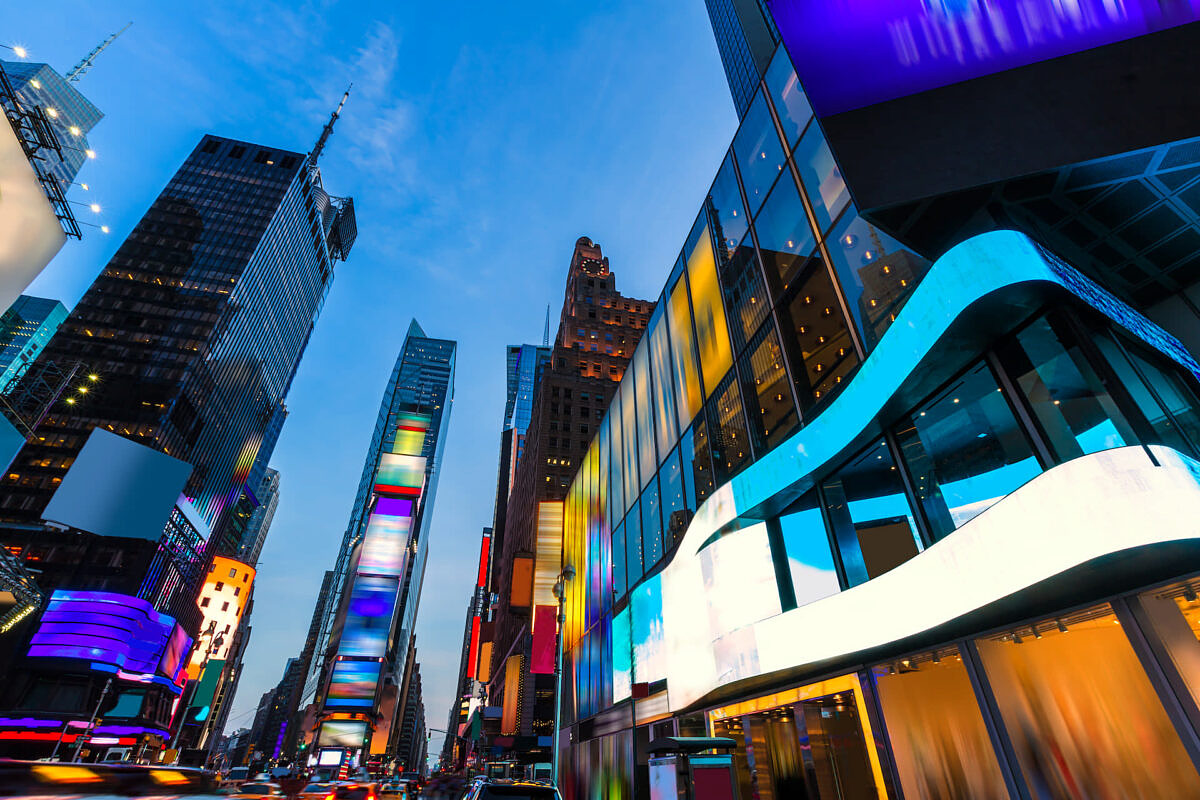State of DOOH: The trends advertisers need to know
Advertising posters, billboards, banners, and video screens – out-of-home advertising is a proven marketing measure. But we’re now seeing significant growth in the digital out-of-home segment, so read our guide to find out more about the trends.

DOOH on a growth course
Market research institute Nielsen assessed the advertising scene at the start of the year and found that DOOH is hugely popular with marketers. Around €389 million was invested in DOOH in the first half of the year alone.
Digital advertising media accounted for 37% of out-of-home advertising in 2021.
The primary reason for the large increase is the low threshold for entry: for advertisers that stream display or in-app ads, programmatic DOOH is similar in nature. Furthermore, programmatic DOOH offers extremely attractive and appealing benefits for marketers, including a wide reach as well as targeting and data solutions.
Increased flexibility and agility in media planning is another positive factor, as advertisers can respond quickly to trends and stream offers. Planned campaigns that respond to specific triggers are also on the rise. The display frequency depends on triggers, including location, weather, and demographic characteristics of the target group, and the campaign itself is tailored to local factors.
Google is also getting into DOOH
Google recently added DOOH to its Display & Video 360° shopping platforms. Connecting Google’s demand-side platform to various supply-side platforms means that advertising customers can now book screens for DOOH. The only drawback is that DOOH ads placed via Display & Video 360° are not personalized and do not display information such as users’ location details. Instead, marketers can use context-based information like screen location to reach the target group.
Where next with DOOH?
From large billboards to small display ads at gas stations and in doctors’ waiting rooms, DOOH is becoming increasingly popular in the public sphere. A recent issue took the shine off DOOH’s upsurge however. The German Federal government’s energy conservation regulations require outdoor billboards that are illuminated or emit light to be switched off from 10 pm to 4 pm the following day. The regulations apply for an entire six months starting on September 1, 2022. Even if this is a significant setback for DOOH campaigns, the future is still bright for DOOH.
Our free guide not only sets out the current situation for DOOH, but also takes an important look at what is coming up in the next few years for this form of advertising:
- DOOH and data: What will be possible in the future?
- How can advertisers utilize DOOH as creatively as possible?
- Targeting the target group: What is DOOH capable of?
- DOOH in the media mix: What will campaigns look like in the future?





